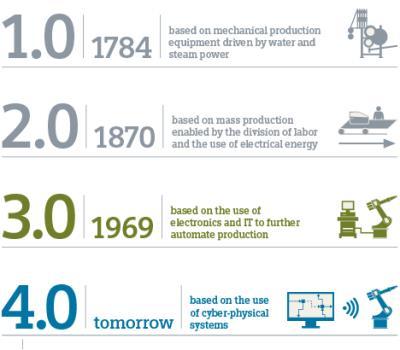How We Can Shape the Fourth Revolution
The big talk at Davos this year was about the Fourth Industrial Revolution. It is best explained in Klaus Schwab‘s post ‘The Fourth Industrial Revolution: what it means, how to respond‘. This Fourth Industrial Revolution is in fact quite close to our Fourth Revolution in its premises, although of course the perspective is slightly different. Still it brings some interesting thoughts about the transformation of the world.
 Industrial Revolutions
Industrial RevolutionsIn particular, Klaus Schwab states that “An underlying theme in my conversations with global CEOs and senior business executives is that the acceleration of innovation and the velocity of disruption are hard to comprehend or anticipate and that these drivers constitute a source of constant surprise, even for the best connected and most well informed.” Even the best informed at Davos are struggling to anticipate what will happen.
Klaus Schwab goes on to describe the social tensions that are arising, in particular in the field of inequality: “in the future, talent, more than capital, will represent the critical factor of production. This will give rise to a job market increasingly segregated into “low-skill/low-pay” and “high-skill/high-pay” segments, which in turn will lead to an increase in social tensions.” Governments struggle to adjust and respond, and there seem to be a number of different path humankind could take in the near future – some acceptable, others not.
Finally he concludes that it comes to us to define what is acceptable or not, based on humanistic values.
How much can we influence collectively the path that the Fourth Revolution is taking? Reactions from governments are always too slow compared to the evolution of services, and it will come down to all of us to find the right governance to make the Collaborative Age an Age where most of humankind can see progress and contentment. Yet it will be tough and there will be crisis. The best solutions remains to be found.




